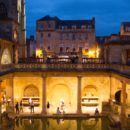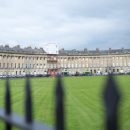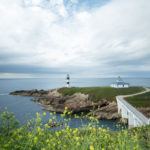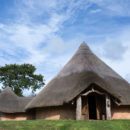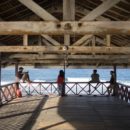If you want good pictures, take good exposures. A well exposed photograph is technically a good picture. Since light is the major determining factor in a photograph, how you control it will determine the output of your camera. Unless you want your pictures to be overly bright or vastly dark, a good exposure is start to good photography.
There are three major factors that affect your camera’s exposure. You shutter speed, aperture and ISO.
Shutter Speed
To understand how the following factors interact think of a bucket being filled with water via faucet. When the bucket gets full, we get the proper exposure. In this analogy, how long the faucet is open is the shutter speed. If you can fill the bucket in 10 seconds that’s the proper exposure. If a scene asks for a shutter speed of 1/100 and you use 1/500, that’s like closing the faucet while the bucket is still half-full.
On a sidenote, shutter speed only affects ambient light. Most of the time, It won’t affect studio lights, strobes, etc.
Aperture
How fast water flows out of the faucet also determines how fast the bucket gets full. The more open the faucet is, the faster water flows which mean the bucket gets full faster. The slower the water flows, the slower the bucket gets full. Aperture is the same. When you use an aperture of f/16, you let light enter slowly since the opening is smaller. When you use an aperture of f/2.8, light gets in more since the opening is larger.
ISO
Bucket size also affects the time it takes to be full. The larger the bucket, the longer it take and vice versa. In relation to ISO, higher values means you need less light for the sensor to capture. While a lower ISO value means you have to take more time or widen your aperture opening. Be wary though, having a high ISO capable camera doesn’t mean you should always use that value. When using a high ISO value, the camera sensor gets hot resulting into noise in data. This is why when using high ISO, your pictures get that grainy film effect which you may or may not love.
All in All
A scene that needs a setting of 1/500, f/4 and ISO 100 can be exposed in various ways. If you want more depth of field, you can use f/5.6 then a shutter speed of 1/250 and an ISO of 100. The change from f/4 to f/5.6 is one whole stop. A stop is double of half the light you had before. Since you halved the light by increasing the aperture to f/5.6, a slower shutter of 1/250 compensated by doubling the light again. The same goes for ISO too. ISO 100 to ISO 200 means one stop or double the light. You can use 1/1000, f/4 then ISO 200 and you will get the same exposure.
Mixing those three together can be confusing at first. Personally, when I’m shooting, I try to use the lowest aperture first. This makes possible the use of faster shutter speed which means no more blurry shots. A shot that is not the sharp is better than a blurry picture in my opinion.
With that in mind, I shoot in Aperture Priority mode most of the time. Don’t be shy in using the modes in your camera. Those we’re put there for a reason. And no point in using manual mode if you waste them just fiddling with the settings and missing the shot.
But don’t worry if you don’t get all these technicalities at once. Most photographers get stuck in technicalities and they let it control them. This hinders creativity which is the most important part in photography. So don’t cringe if you exposure is off by a third of a stop, that won’t ruin your picture. Just keep on shooting and embrace the light!

